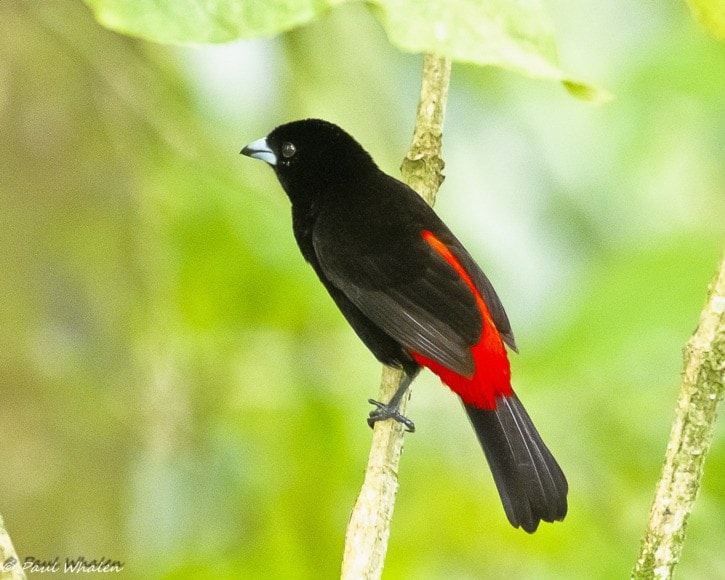It’s hard to believe how quickly our month in Costa Rica seems to have flown by! Less than a week left now.
Last week we left our condo for four days to see some of the central mountains. Just a short distance from the coast, the mountains rise abruptly and the climate is completely different.
The lower parts of the mountain are rain forests, while above about 1,500 metres the forests are frequently in the clouds. This is the cloud forest habitat.
The birds seen here in the mountains are completely different to those in the dry forests of the Pacific coast. Shortly before we arrived at our B&B in Santa Elena, we stopped for coffee at a roadside coffee shop, and the show started immediately. Four species of hummingbird were flitting in and out of the feeders beside our table. One of them was a large purple hummer, with a long curved bill and a white tail. Quite impressive!
The following morning we walked in the Santa Elena Cloud Forest Reserve. Birding in such a thick forest can be frustrating at times – you hear a lot, but see a little!
Our morning walk produce less than 20 species, but 13 of them were new to us. These included Slaty-backed Nightingale-Thrush, Purple-throated Mountain-gem, Spangle-cheeked Tanager and Orange-bellied Trogon.
The following morning, we birded slightly different habitat and found 14 more new species. These included Yellow-throated Euphonia, Golden-browed Chlorophonia, Coppery-tailed Emerald and White-naped Brush-Finch. But by far the highlight of the morning was the sighting of a male and female Resplendant Quetzal. This iconic bird of Central America can be very hard to find and is perhaps the main target of anyone visiting this region.
That afternoon we changed locations and spent two nights in a B&B at La Fortuna. Even though this was only about 30-40 kilometres north of Santa Elena, it was just far enough north and east to provide us with quite a few species only found on the Caribbean side of the mountains. In the short amount of time we had left that afternoon before the sun set, we had four new species right outside our room.
The next morning we added 11 more without even leaving the property. There were several highlights here. Chestnut-mandibled Toucan, Scarlet-thighed Dacnis, Red-legged Honeycreeper and Passerini’s Tanager provided some remarkable splashes of colour.
The toucan is black and yellow with red and white trim and a huge brown and yellow bill. The Dacnis is black below with a brilliant teal coloured back and head. The little tuft of bright red feathers at the top of the legs can be quite difficult to see. The honeycreeper is bright purple, with some black in the wings and back and a brilliant turquoise blue crown. The legs are truly bright red and are quite easy to see.
The tanager is just two-toned; black and red. The bird is mostly black, but the brilliant scarlet back and rump stands out like a beacon in the bright sun. This is a very difficult bird to photograph due to the extreme difference in light intensity coming from the black body and the red back.
In the photo here, much of the detail in the black feathers has been lost, correcting for that would have resulted in loss of colour intensity in the red. Thanks to Paul for allowing me to use his photo!
All in all, our time in the mountains was fabulous. I added 49 species of new birds during those four days, that’s far more than the three weeks we’ve spent here on the dry Pacific coast.
